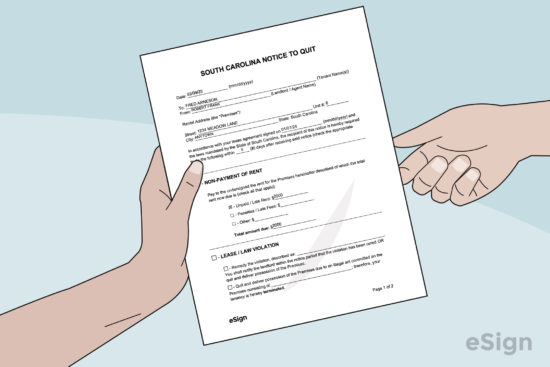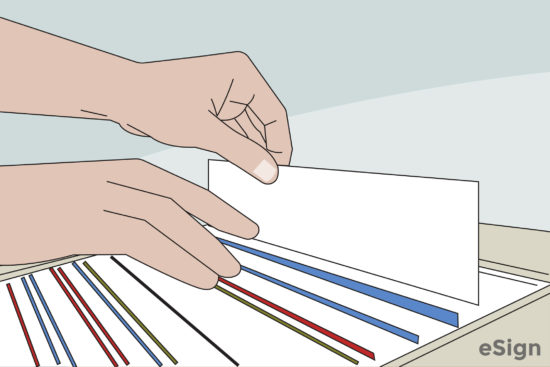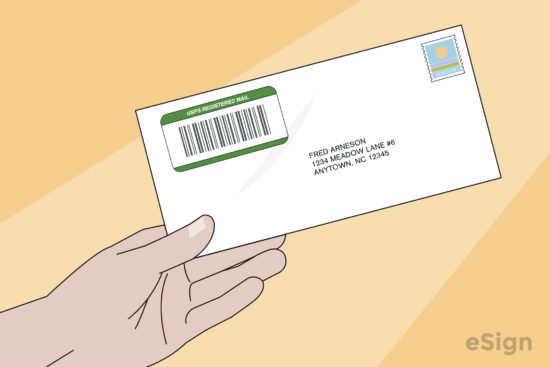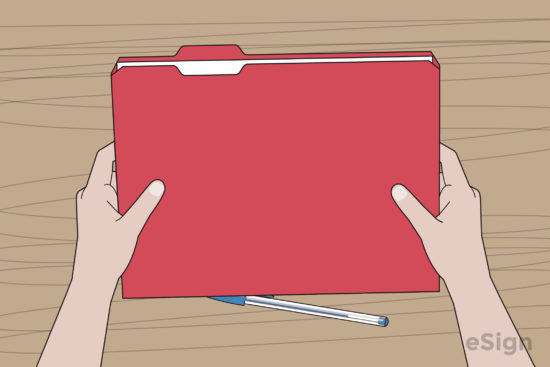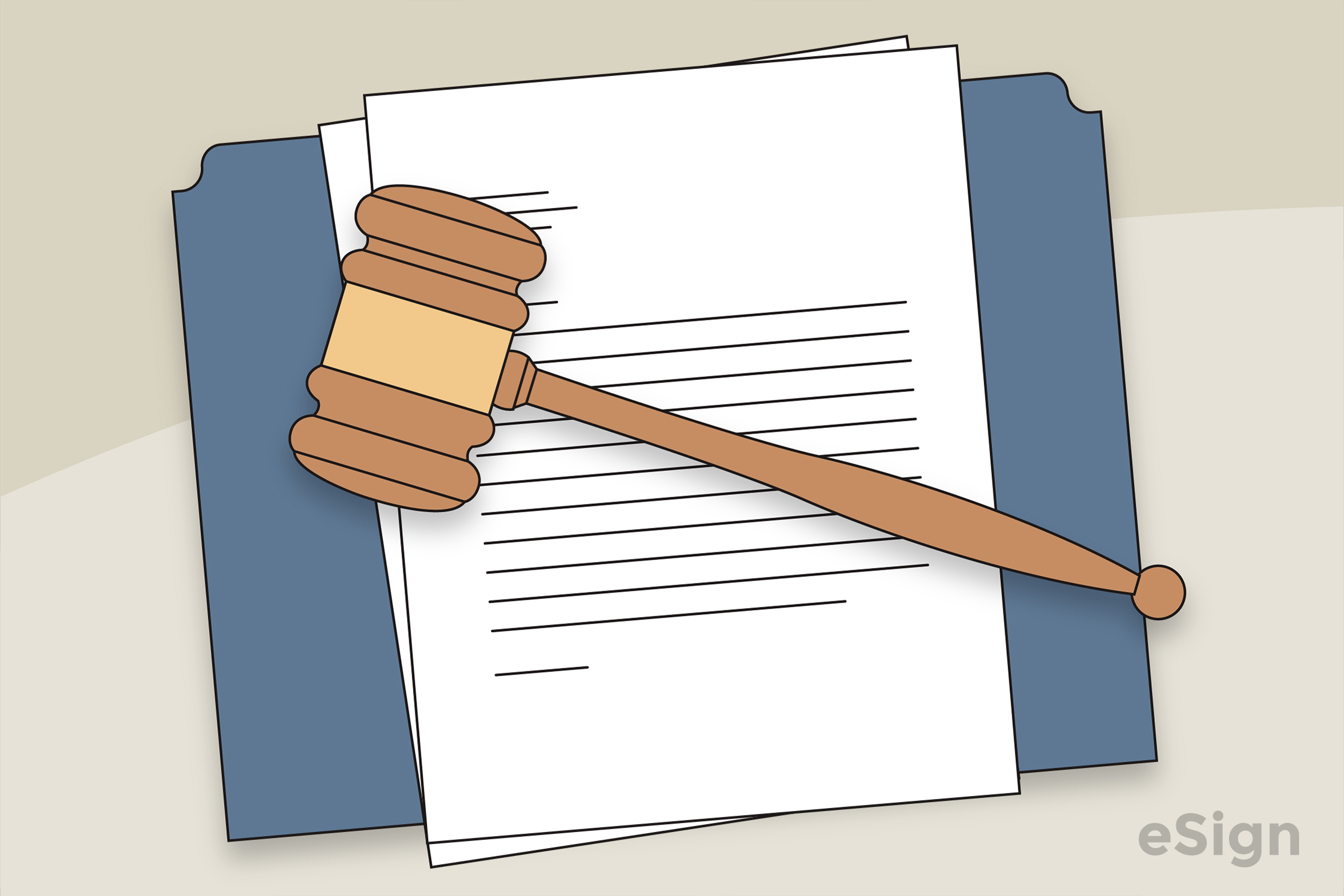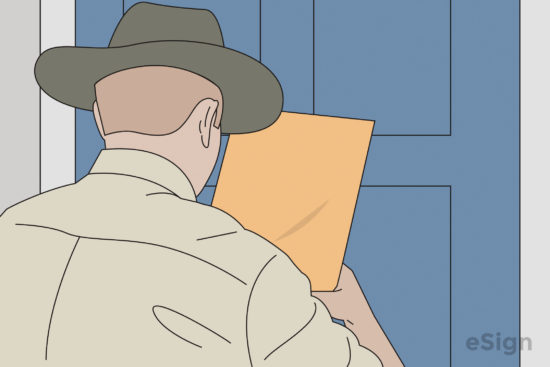Eviction Notices: By Type (3)
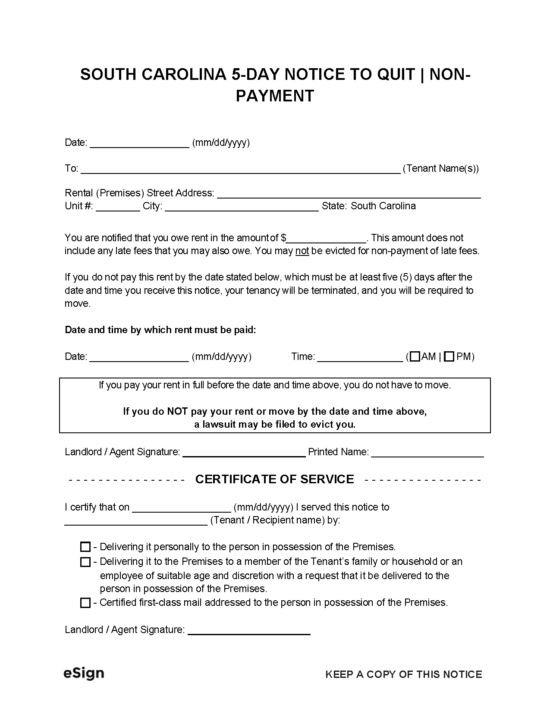 5-Day Notice to Quit | Non-Payment – Used to inform a tenant that they have five days to pay overdue rent or vacate the property. 5-Day Notice to Quit | Non-Payment – Used to inform a tenant that they have five days to pay overdue rent or vacate the property.
Download: PDF, Word (.docx), OpenDocument |
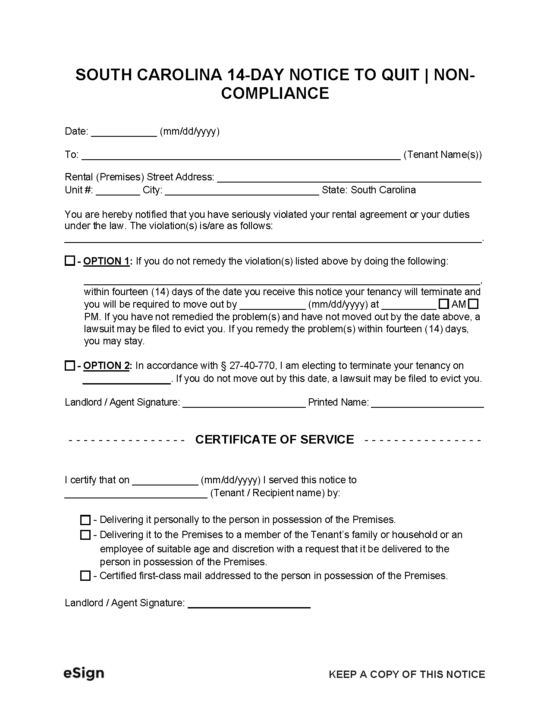 14-Day Notice to Quit | Non-Compliance – Notifies a tenant that they must remedy a lease violation within 14 days or vacate the property. 14-Day Notice to Quit | Non-Compliance – Notifies a tenant that they must remedy a lease violation within 14 days or vacate the property.
Download: PDF, Word (.docx), OpenDocument |
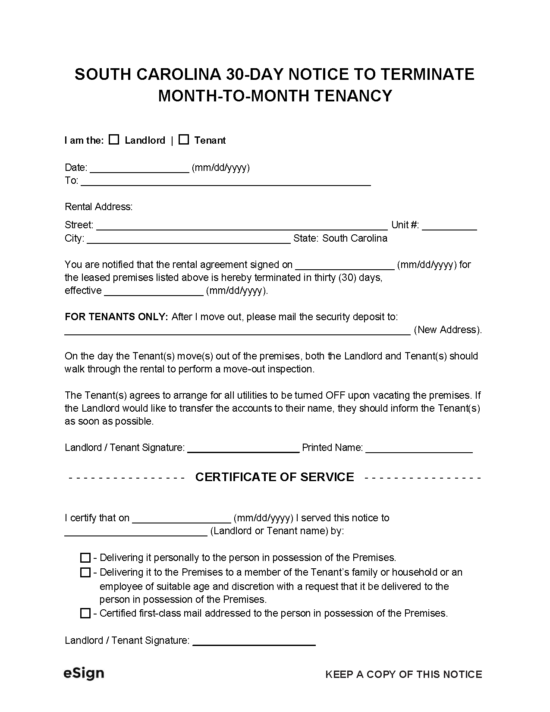 30-Day Notice to Terminate | Month-to-Month Tenancy – Enables the landlord or tenant to terminate a month-to-month tenancy. 30-Day Notice to Terminate | Month-to-Month Tenancy – Enables the landlord or tenant to terminate a month-to-month tenancy.
Download: PDF, Word (.docx), OpenDocument |
Notice Requirements
How to Evict a Tenant in South Carolina
Step 1 – Deliver Notice
A landlord may deliver a notice to quit if a tenant fails to pay rent, breaks their lease terms or their duties under law, or if the tenancy has expired.
Step 2 – File Application for Ejectment
If the tenant has not moved out or complied with the notice by the date provided, the landlord may begin the ejectment proceedings by filing an Application for Ejectment with the Magistrate Court that has jurisdiction over the property.
Step 3 – Magistrate Issues Rule
The court will issue a summons, referred to as a Rule to Vacate or Show Cause, which gives the tenant 10 days to vacate or respond. The form may be served on the tenant by the sheriff, a deputy, or any person of at least 18 years of age (other than the landlord or their attorney).
If service fails after two attempts, the summons will be posted on the premises and delivered by mail.
Step 4 – Answer
The tenant has 10 days from receiving the Rule to Vacate to contest the claims by filing an Answer to Rule to Vacate or Show Cause and requesting a hearing from the magistrate court (if not already scheduled). If the tenant doesn’t respond, they will lose by default.
Step 5 – Hearing
Both parties must appear and present their cases at the hearing. If the court rules in the landlord’s favor, they will issue a Writ of Ejectment. A verdict in favor of the tenant allows them to remain on the property.
Step 6 – Writ of Ejectment
After the landlord wins the trial (or if the tenant does not request a hearing and loses by default), the writ will be served on the tenant by a constable or deputy sheriff, requiring the tenant to vacate within 24 hours of service.
If the tenant does not comply and continues to occupy the premises 24 hours after service, the officer will arrive at the premises and remove the tenant.
Court Forms + Resources
Resources
- Instructions for Eviction Hearings
- Landlord & Tenant Law in South Carolina
- SC Judicial Branch – Magistrate Judges
Court Forms
- Application for Ejectment
- Signed by: Landlord or Attorney/Agent
- Rule to Vacate or Show Cause
- Signed by: Magistrate Judge and Server
- Writ of Ejectment
- Signed by: Magistrate Judge


